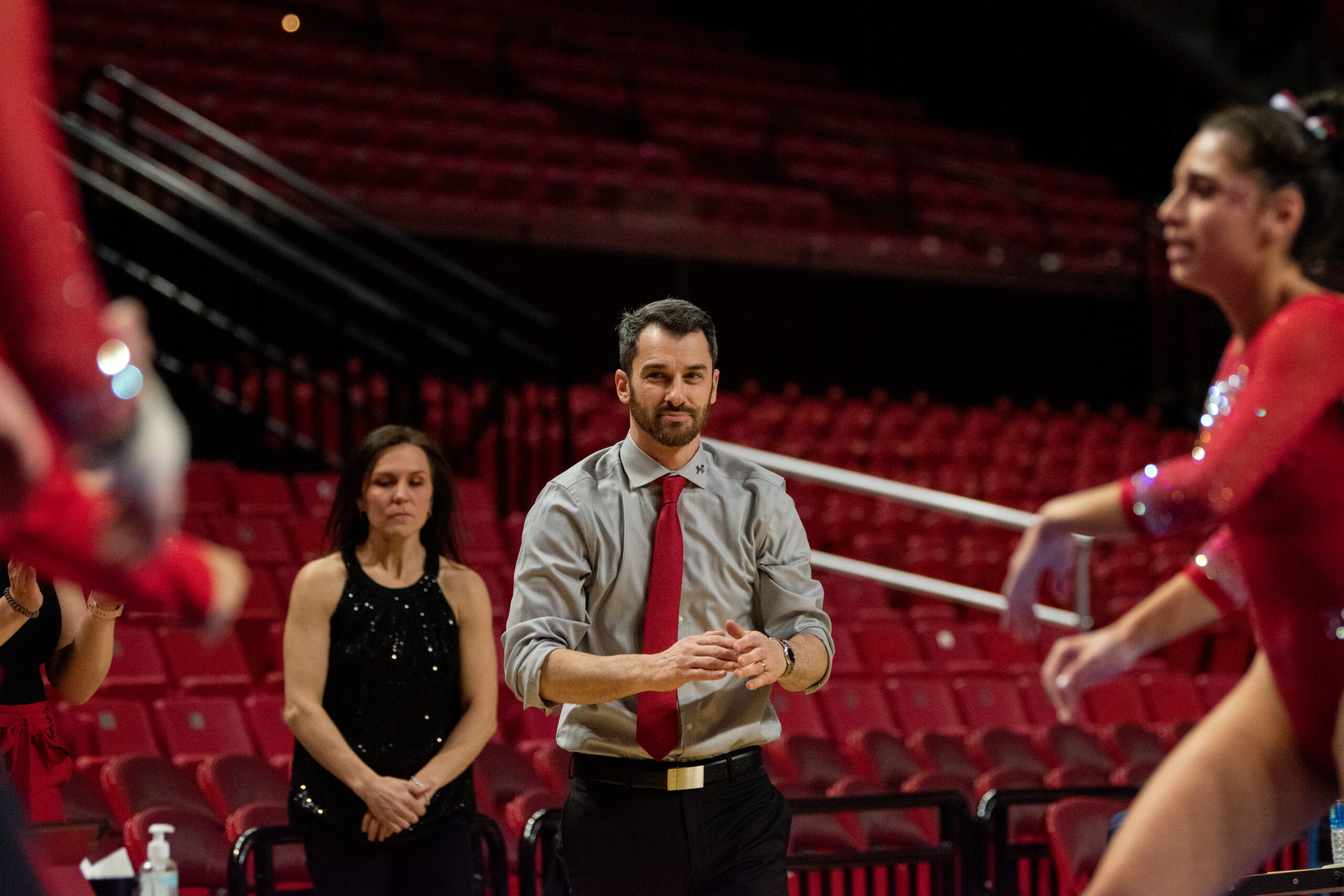UCLA women’s gymnastics is used to change.
The Bruins have had three head coaches over the past five seasons and now face an impending conference switch. UCLA will join the Big Ten in August 2024, meaning its gymnastics team will take on a new slate of conference opponents during the 2025 season.
The move signals a shift from competing against Pac-12 rivals like Utah and California, some of the best teams in the country, to a conference with one national champion in the 40 years of NCAA gymnastics championships.
UCLA head coach Janelle McDonald said she welcomes the chance to consistently compete against new teams.
“Our student athletes are going to continue to get really great opportunities on and off the gymnastics floor,” she said.
The Bruins have won the third-most NCAA titles of all schools at seven, with their most recent victory coming in 2018. The Big Ten’s only national championship came more recently than UCLA’s triumph, with Michigan claiming the conference’s first NCAA title in 2021.
UCLA isn’t the only historically successful gymnastics program with an upcoming conference switch. Oklahoma becomes a member of the SEC next year and will begin to face foes like Florida and LSU in 2025. The Sooners have won six national titles, adding a second consecutive trophy last month.
Maryland head coach Brett Nelligan said UCLA’s move brings additional strength to the conference, including the buzz that surrounds competing against a top team.
“It means we’re able to go against the best of the best every weekend,” he said. “It just adds more excitement for our student athletes and for our fans.”
In terms of season-high scores, UCLA has almost always outperformed Big Ten teams over the past decade.
In six seasons since 2014, the Bruins boasted a higher season-best score than any Big Ten school. Michigan was the only team to outscore them more than once over that span.
“My philosophy has always been that you’re only as good as the teams you compete against,” Michigan head coach Bev Plocki said.
Season-average scores tell a similar story.
UCLA’s season average has placed toward the top of the Big Ten over the past 10 years.
Michigan began overtaking the Bruins’ scores starting in the 2021 season. Even though their season highs and averages have exceeded UCLA’s since then, the Wolverines have yet to make another national final since their victory.
“Sometimes it’s harder to repeat than it is to get there that first time,” Plocki said. “If you don’t have the agony of defeat, you don’t have the fire in your belly to go back and fight harder.”
The Bruins missed out on the past three consecutive NCAA finals. Longtime head coach Valorie Kondos Field left in 2019 and was replaced by Chris Waller from 2020 to 2022, whose brief reign was marred by controversy. McDonald is in her first year with the program.
The Bruins overcame the tumultuous stretch and returned to the NCAA semifinals for the first time since 2019 last month, receiving the highest non-advancing score in an NCAA semifinal competition.
UCLA’s third-place finish to Oklahoma and Utah meant they missed out on the collegiate final for just the seventh time since 1993, but its strong performance in the latter stages of the national tournament meant a lot to the program, McDonald said.
“Culturally, our team is in a really great place,” she said. “We needed to learn to love gymnastics again … The team kept leaning in and moving forward together.”
UCLA will contend with the adjustments that come with switching conferences.
Gymnastics is a subjective sport, with scores varying between different regions. UCLA’s results could change when the Bruins face new judges.
“For whatever reason, the scores tend to fluctuate,” Nelligan said. “We won’t know the true outcome till they’re head-to-head within the conference.”
UCLA is geographically isolated compared to the rest of the Big Ten. The conference shift could mean farther travel for athletes.
But gymnastics is unique in that multiple teams can perform simultaneously in a meet. Four or five schools can rotate through events at the same time.
While exact details aren’t finalized, there have been initial meetings about scheduling.
“The travel was actually going to be less than we had anticipated because the Big Ten is so committed to making this a smooth transition and limiting the impact on our student athletes overall,” McDonald said.

